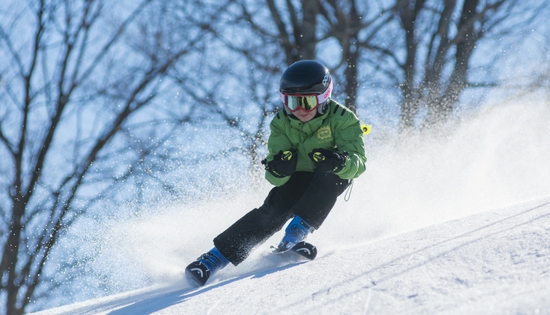Staying Healthy on Your Ski Trip
Posted in

Spring break is right around the corner, which means many Oklahomans will be heading to the mountains for skiing and snowboarding. It’s important to stay warm, keep hydrated, guard against sun damage and protect yourself from injuries as you hit the slopes this spring break.
Stay warm
Once you start looking into winter wear, you’ll quickly realize there are a lot of options, and it can be difficult to determine what type of clothing will be right for you. Although most ski resorts offer shops that sell ski apparel, you can save yourself a lot of money by planning what you’ll wear before you leave Oklahoma.
Think about your clothing as layers. It’s best to have a few different layers instead of one very heavy coat.
You’ll need a base layer to keep you dry, which is key to staying warm. Long underwear or thermals would be fine for your base; however, the best base layers are made of sweat-wicking material. On top of your base layer, add thin sweaters and/or fleeces. Wearing layers traps more air, which works as an insulator to keep you warmer. Try to avoid cotton, which soaks up water and doesn’t dry well. The other benefit to layering is that as you warm up, you can remove layers as needed, instead of being stuck wearing the same bulky coat all day.
You then need a waterproof jacket and waterproof pants. The drier you are, the warmer you’ll be, so don’t wear jeans as your outer layer.
Waterproof gloves are also best to help you keep your hands warm and dry. You may also want to pack a scarf or neck warmer for especially windy days. And don’t forget to pack extra socks! You may want to wear a few layers of socks, and it’s never a bad idea to have a few dry pairs waiting for you just in case any snow gets in your ski boots.
Stay hydrated
Keeping your body hydrated while skiing can be difficult simply because it’s hard to carry a water bottle around. Hydration is important, though, because skiing is a high-intensity workout, and your body loses more water at higher altitudes.
If you don’t mind carrying a water bottle, make sure to purchase one that won’t freeze while you’re skiing. Other options are to wear a hydration backpack or bladder or to keep a soft-sided water bottle in your pocket. If you really don’t want to carry around a water bottle, make sure to take breaks and stop and get water where it’s available at the resort.
Avoid dehydration by skipping coffee or tea before you hit the slopes. Drink plenty of water in the days before your trip and the morning before you head out.
Stay protected from the sun
If you’re not hitting the beach for spring break, you don’t need to pack any sunscreen, right? Not so fast. The combination of higher altitude and UV rays reflected by the snow actually puts you at an increased risk of sun damage. UV radiation exposure increases about four to five percent with every 1,000 feet above sea level, according to the Skin Cancer Foundation.
While only a small portion of your skin will be exposed, it’s important to apply broad-spectrum sunscreen with an SPF or 30 or more to any exposed skin before you start your ski adventure – even if it’s cloudy. Don’t forget your lips, ears, neck, chin and around your eyes.
Reapply your sunscreen every two hours or more often if you’ve been sweating heavily. If you pack a travel-sized lip balm and sunscreen it’ll be easy to reapply while you’re on the chairlift. Wear a hat when you’re not wearing your helmet. It will not only keep you warm, it will protect your scalp from the sun. Consider using sunglasses or goggles that offer 99 percent or greater UV protection and/or are wraparound in shape.

Try to plan your ski times before 10 a.m. or after 4 p.m., when the sunlight won’t be as intense.
Protect yourself from injuries
Make it a priority to get in several workouts throughout the few weeks before you leave for the mountains. Even just a couple days of skiing will be hard on your body if you haven’t done any physical activity in a while.
Before you hit the slopes, grab something with protein and complex carbs for breakfast — you’ll need the fuel.
Wear a helmet.
Make time to stretch, especially your hips, hamstrings and quads. If you have room, pack a foam roller so you can get your muscles ready for the next day.
Don’t forget the details
Before you embark on your trip, you may want to call your health insurance provider to find out how your coverage will transfer in different parts of the country. While it’s never fun to think about injuries, knowing what’s included and what’s not included in your health insurance coverage before you leave home can help you from making a simple mistake. Make sure to ask if there are any in-network doctors or hospitals where you’re going. Find out how an “emergency” is defined by your insurance company and whether urgent care is acceptable. You could spend thousands by going to an out-of-network doctor when there might be one who is in-network nearby.
If you’re vacationing outside of the United States, it’s especially important to find out if your health insurance policy will cover international medical expenses, because most do not. You may want to look into vacation medical insurance. Following these tips can help you enjoy your trip with peace of mind.
